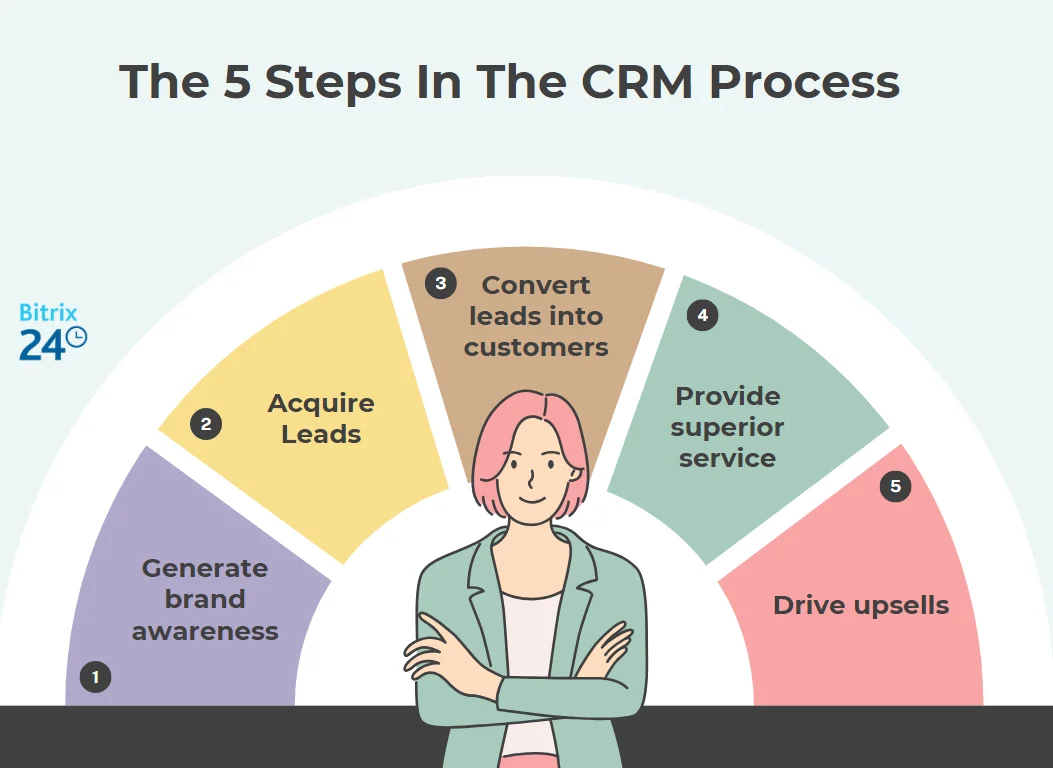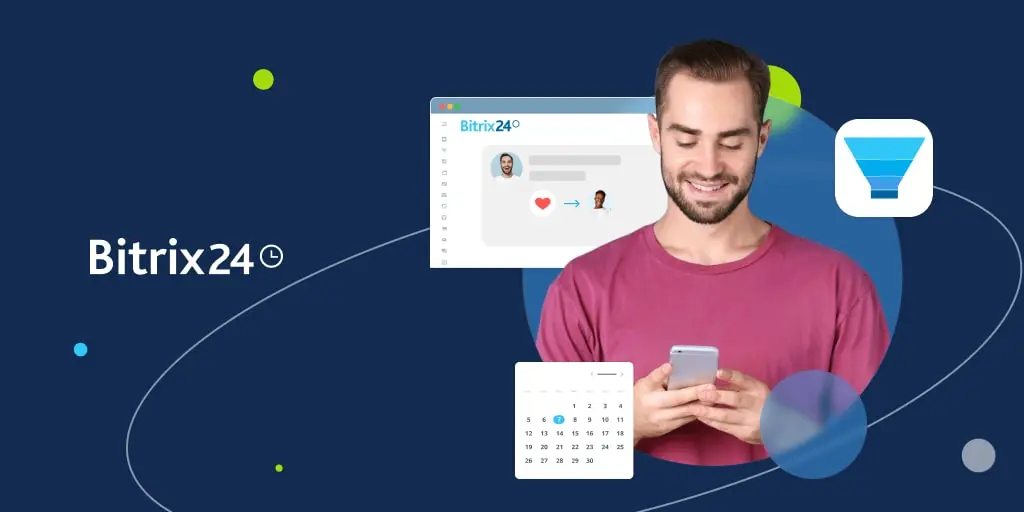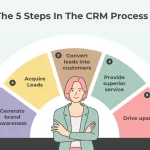The CRM (Customer Relationship Management) process is a strategic approach, often long-term, aimed at building meaningful relationships with customers throughout their entire lifecycle. This encompasses everyone from potential leads to loyal repeat customers.
CRM processes are integral to any CRM system and consist of five key steps. The primary objectives are to increase brand awareness, enhance customer loyalty, improve customer support, and boost customer retention and business growth.
A CRM process is deeply intertwined with the various types of data a company collects and stores. Utilizing CRM software allows you to organize vast amounts of information and perform accurate calculations and analytics. This software enables you to store all sales-related data and facilitates file sharing between departments.
In essence, a CRM process combines marketing strategy with CRM technology. It helps attract more potential customers and fosters strong customer relationships. To effectively implement it in your business, let’s explore the steps involved in any CRM process.
The 5 Steps in the CRM Process
Establishing a CRM process requires collaboration among different company departments, such as marketing, support, and sales teams. To maximize the benefits of your lead generation strategies and marketing campaigns, follow these steps:

Step 1: Generate Brand Awareness
First impressions are crucial, especially when seeking new customers. The initial focus should be on introductions, primarily involving marketing efforts. This step includes:
Identifying the Target Audience: Understand who your potential customers are, their location, hobbies, interests, and preferred social media platforms. By knowing their pain points and concerns, you can capture their attention with relevant content.
Creating Customer Personas: Segment potential customers into groups based on shared characteristics like demographics or age. This helps in crafting targeted campaigns and personalized interactions.
Developing Marketing Campaigns: Plan and execute marketing campaigns that boost customer engagement. Research the best strategies, considering your audience’s interests and the sales process structure. Utilize A/B testing and marketing automation to find the most effective approach.
The Role of CRM Technology
CRM technology plays a crucial role in saving time and ensuring accuracy. The software can store and analyze large volumes of CRM data, considering any necessary parameters. It eliminates the need for additional analytical tools by providing ready-to-use data on potential and existing customers. Moreover, CRM solutions automate calculations and segmentation, reducing the risk of errors.
Step 2: Generate Leads
The customer journey and CRM process begin with the initial interaction when you introduce yourself to your target audience. The next step is to capture their attention and interest in your business and its offerings.
Engaging potential customers is crucial. Depending on your company’s structure, this task might fall to the marketing or sales team, or it might require their collaboration. Lead-generation strategies that can be integrated into the CRM process include:
- Website visitor forms
- Email campaigns
- Live chats or chatbots
- Social media campaigns
- Retargeting campaigns
- How can a CRM tool assist?
Advanced CRM features can support the implementation of any strategy. They enable you to create various campaigns, even with limited experience. Additionally, CRM tools allow you to set up contact management channels, integrate AI assistants for chatbots, and store all customer information and communications for retargeting purposes.
Another valuable feature of CRM tools is personalization. You can create tailored content for different segment groups, ensuring it reaches the right audience.
Step 3: Convert Leads into Customers
This step is often the most rewarding in the CRM process, as it involves turning leads into paying customers. If executed correctly, this is when you start seeing actual sales.
However, this step can also demand significant time and effort from your sales and marketing teams. Your goal is to demonstrate the effectiveness of your solution, whether it’s a product or service, and why it stands out from the competition.
There are numerous strategies to help convert leads into customers, including cold calling, personalized email offers, social media ads, blogs, podcasts, and more. Even if the initial interaction doesn’t yield immediate results, there are many ways to build interest in potential leads. It requires persistence, but the effort will pay off.
Why is CRM software essential for this step?
One key feature that helps convert leads into customers is the CRM’s lead scoring tool. It prioritizes leads in your system, highlighting those worth focusing on.
Another useful feature is automation and reminders. Many customers engage with your brand only after multiple contacts. With a large volume of data, it’s challenging to remember to follow up consistently. Automated reminders or follow-up emails can be invaluable.
Step 4: Deliver Exceptional Customer Service
Congratulations on gaining a new customer! However, the CRM strategy doesn’t end here. To build a successful business, ongoing efforts in customer retention are crucial.
How can you foster meaningful relationships and ensure customers return? The key is outstanding customer support. This interaction is often the most memorable and can significantly impact your brand’s reputation. You need to assure customers that you can meet their needs and respond to their inquiries promptly.
It’s also vital to offer multiple communication channels, such as:
- Call centers
- Social media
- Live chats
- Website forms
How does a CRM tool enhance customer interactions?
Managing numerous communication channels and customer interactions can be challenging without a unified platform like a CRM system. A CRM allows you to respond quickly and personalize your approach based on previously gathered customer information.
Step 5: Boost Sales with Continuous Customer Engagement
Customer loyalty is a valuable asset for any business. Loyal customers not only make repeat purchases but also recommend your brand to others in their social circles.
Once you’ve established customer loyalty, the next step is to introduce higher-value products. How can you achieve this? The answer lies in personalization.




